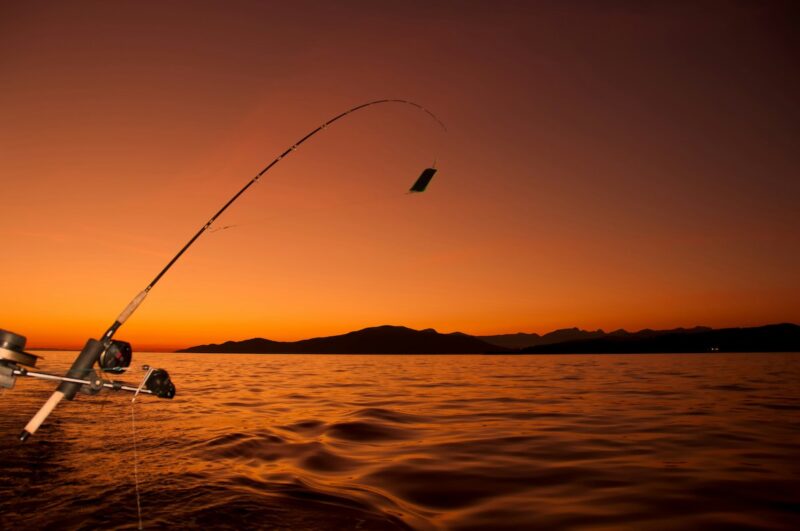Will a ban on sports fishing replenish wild salmon stocks?
“If they are claiming that the closure of our salmon farms will bring the wild fish back, then we should also be asking what a ban on sports fishing will do to replenish wild stocks.”
By Fabian Dawson
SeaWestNews
First Nations communities in British Columbia who see salmon aquaculture in their traditional territories as a pathway for economic reconciliation and wild stock rejuvenation, are calling on the government to take a closer look at the impact of sport fishing on dwindling wild stocks.
The Coalition of First Nations for Finfish Stewardship (FNFFS) said that the ‘precautionary principal” touted by activists to shut down salmon farms in their traditional territories must also be applied to other so-called stressors like sports fishing.
The activist groups, including Wild First have been making fake claims attempting to link the recent high returns of adult pink salmon to the closure of some salmon farms in BC – all of which have been thoroughly debunked, based on data collated by professional biologists and the Department of Fisheries and Oceans (DFO).
The Sports Fishing Institute of BC (SFI), a named supporter of Wild First, also asserts that DFO must adopt the precautionary principle when it comes to assessing fish farms and related activities in open waters.
“If they are claiming that the closure of our salmon farms will bring the wild fish back, then we should also be asking what a ban on sports fishing will do to replenish wild stocks,” said FNFFS spokesperson, Dallas Smith.
“We need to have an in-depth look at how sports and recreational fishing is impacting the wild stocks in our traditional territories,” he told SeaWestNews.
Recreational or sport fishing in B.C. contributes approximately $1 billion a year to local economies in revenues and in federal, provincial and municipal taxes. Approximately 9,000 people and their families depend on recreational fishing for their livelihoods, providing direct fishing services and services through transportation and accommodation.
In British Columbia, government decisions at the behest of activists, have already shut down 40% of salmon farms since 2020, increasing carbon emissions and wiping out jobs that are the lifeblood of rural, coastal and Indigenous communities.
Before the shutdowns the salmon farming sector was the largest agri-food export in British Columbia. The sector employed approximately 6,500 people, produced close to 500 million salmon meals per year, received inputs from over 1,000 individual suppliers and had an economic value of $2 Billion.
All existing salmon farms in BC are supported by the First Nations communities that they operate in.
The Federal Government is now working with the industry, First Nations, coastal communities and other stakeholders to come up with a Transition Plan for salmon farming in British Columbia.
So far at least 10 government studies and a range of court rulings have stated that the salmon farms have less than a minimal impact on migrating wild stocks.
According to Ha-Shilth-Sa Online that is published by the Nuu-chah-nulth Tribal Council, the SFI has recently been given over $3 million in government funds to collect more data on chinook and coho stocks off southeastern Vancouver Island and around Bamfield’s coast. Announced in late November, the province states these research projects will support threatened Pacific salmon stocks by making the recreational fishery more sustainable.
“For years the Nuu-chah-nulth Council of Ha’wiih Forum on Fisheries has questioned why catch and release given the threatened state of many salmon stocks…but questions remain around how many of the fish survive after being released,” the paper said.
Owen Bird, SFI’s executive director said the recent government funding will help demonstrate a balance between predictable and reliable opportunity and the socio-economic benefits associated with the activity and achieving conservation objectives for salmon and marine resources.
“Among the outcomes, findings will help the recreational fishing community modify and adapt fishing and fish-handling practices to minimize the impact on a recreationally caught fish released for any reason,” he said in a statement after the funding announcement.
The number of “sport fishers” has continued to rise since the global COVID-19 pandemic began in 2020, and they’re having a devastating impact, states the group PETA – People for the Ethical Treatment of Animals.
A Florida State University study stated that sport fishers are responsible for killing almost 25 percent of overfished saltwater species. Researchers at the Oklahoma Department of Wildlife Conservation also found that as many as 43 percent of fish released after anglers caught them died within six days.
The BC SPCA states studies have shown that, depending on the species and method of capture, post-release mortality can range up to 95 per cent.
(Photo by James Wheeler on Unsplash)

